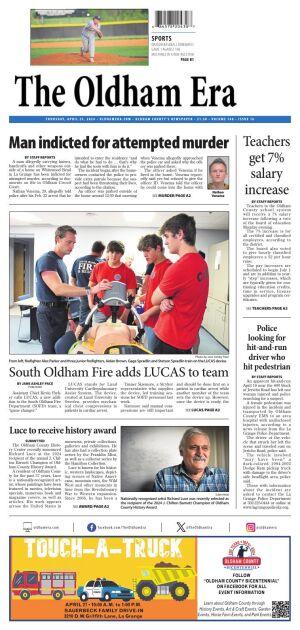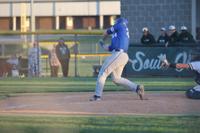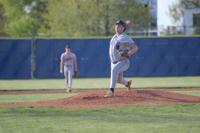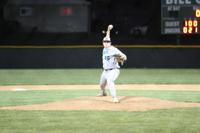It’s often advised not to talk about politics or religion when in polite company.
There is merit in that advice as there is no reason to seek out divisions when there is plenty of room for unity. However, today I’m going to violate that and talk about a topic that falls into both categories ... high school basketball in Kentucky.
Kentuckians have long been known for our love of college basketball. Despite none having been on the sidelines in more than 47 years, figures like Adolph Rupp, Peck Hickman and Ed Diddle are still revered. The rivalries are so intense that even after Western Kentucky University won its initial game against the University of Kentucky in 1971, it took 19 years for the programs to schedule another match. Despite both being among the 15 schools with the most wins ever, they have only faced off four times in the regular season.
Purists know that our affinity for college basketball doesn’t hold a candle to our love for high school hoops. In Kentucky, there are two types of sports — “ball” and everything else. And, trust me, when someone mentions their grandson plays ball for a school, it’s never about golf.
High school basketball in our Commonwealth can be both intense and entertaining, and not just on the court. I’ve witnessed family members of opposing teams engage in shouting matches, referees fleeing as soon as the final buzzer sounds, and even one normally-genteel lady transform into a fervent fan, wielding her high heel as a hammer as she beat the wooden bleachers. I’ve even been on a bus quickly leaving Campbellsville, where we were advised to keep our heads down as objects were hurled at the windows. Needless to say, our passion runs deep for this sport.
This last month, the state title game between Lyon County (with a population of 8,680) and Harlan County (population 26,831) drew more than 13,500 fans to Rupp Arena. To put that in perspective, only 16 colleges in the nation have higher attendance per game. That’s 3,000 more people than reigning National Collegiate Athletic Association (NCAA) champion Connecticut draws per game.
Despite our many differences, the love of high school basketball unites most everyone, regardless of background, race, gender or age. While age may mellow us a bit, deep down we still know that our high school rivals are lyin’ and cheatin’ sacks of ... well you get the picture, don’t you, you snotty Scotties?
As intense as we play and watch the game, integrity is paramount. Losing to a better team or being outcoached may not be fun, but it’s accepted. Facing stacked odds is a different matter altogether. And that brings us to the current state of affairs with the Kentucky High School Athletic Association (KHSAA).
In 1994, I was a member of the small but mighty Metcalfe County Hornets. Better than average, we made it to the state All “A” Classic Rournament, which is designed for smaller schools. Our first-round game was against University Heights, a private school in Hopkinsville. Imagine our eyes as we walked out on the court and first caught sight of the Blazers team that not only featured six future college players, but two who would play in the National Basketball Association.
The next year we made a repeat visit, only to face off against Covington Holy Cross. Not as talented as University Heights, the team still had Todd Clark, who went on to be a starter for Northern Kentucky University — which twice was the NCAA Divison II runner-up — and Joe Harney, who averaged nearly 10 points per game while playing four years for WKU.
After being bit twice, it became obvious to me that private schools have a distinct advantage when it comes to their roster. And that isn’t just limited to basketball. As prospects begin to be identified at earlier ages, private schools can swoop in and sell their athletic and academic programs in ways that public schools are not able.
It only takes one or two solid years, and suddenly, a tradition is born. And while many private schools quickly note their rosters are full of players who came all the way through their system, it makes me wonder how many of those kids’ parents were initially attracted to those winning traditions.
A glance at the past 25 years reveals a concerning trend. When looking at all sports, for both boys and girls, private schools have claimed 45% of the championships, despite comprising only 18.5% of the KHSAA member schools. This imbalance underscores the inherent advantage that private schools enjoy.
That advantage is akin to playing poker where your opponent shuffles through the deck to get their hand while you’re stuck with what you’re dealt. There may be still be a chance of winning, but the odds are not in your favor.
In a world where education is increasingly politicized, I want to make it clear that I am not talking about the academic merits of public versus private schools. I believe a free public education is a great equalizer and the catalyst that led to American supremacy. However, I also believe that most all private schools are wonderful and often meet needs that public schools cannot. My criticism is simply reserved to athletics.
While the KHSAA technically prohibits high school recruitment, investigation and enforcement remains lackluster. Additionally, their oversight does not extend below the high school level, simply pushing recruitment to an earlier age.
Something must be done to enable and require the KHSAA to genuinely crack down on recruiting. I challenge them to ensure equitable treatment of both public and private schools, placing them under a standard that both must meet. In the alternative, perhaps the time for separate postseason tournaments is warranted.













